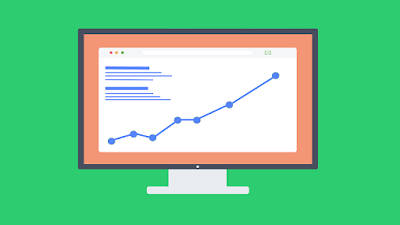Some simple yet effective Web Designing Principles
As the internet evolves from the infancy into maturity, web development, design, and marketing become more and more superior - plus more and more complex. Content mind games, various scripting methods, elegant graphics and effects... and on... allow us to develop some impressive websites.
 |
| (image source: pixabay.com) |
From your major, multi-product online business conglomerate to the one-page one-product mini-site, the purpose is the same. Provide guests, whether internet savvy or very first-time surfers, with an online experience that's fast, efficient, straightforward - and dare My answer is it... yes, enjoyable.
If you're an entrepreneur building your own website, or reviewing one built for you with a web development and design expert, it is important your website, your internet business, adheres to these 8-10 simple, yet essential, design principles. Heed them, and online success is sure to follow. Ignore them, at your peril. In this article they are.
Each web page will need to have a goal - and that goal must be plainly mentioned. While a steady design 'look and feel' is essential across all pages of your website, each page has a specific function to accomplish. And that function should be plainly understood by all site visitors to your website. Many people to elicit reviews, provide feedback, promote your company, present product information, etc., all play a role in your ultimate goal of growing your business.
Navigation around and through your business internet site must be evidently obvious and easy to use. Check in with my article on site nav for more details.
Steer clear of distraction and clutter by minimizing consumption of expensive flashing and moving items, which provide more soar than steak, and make your essential services or products harder to find.
 |
| (image source: pixabay.com) |
Certainly, not all of us have broadband. Yes, there are still a no. of users surfing the internet with slower, less efficient, dial-up access which will change in the future. Ignore this substantial customer base and your business will surely suffer. To avoid this pitfall, pay careful attention to eliminating internet-clogging elements on your website. When possible, use text message rather than graphics, static images rather than animation, several smaller pages rather than one large page. Do this and you could feed quite nicely on the desertions from your showy competitors.
If you’re broadband users, who are generally not negatively put in place by dozens of 'bells and whistles', who may actually enjoy such an impressive display, remember, 'form uses the function'. This is especially important for a business website, where functionality is key. All else is fluff and distraction.
Intended for those individuals who may be 'visually challenged, make sure your site is straightforward to see. Avoid fancy website and use the more legible standard-bearers, such as Times New Roman, Courier New, Arial, and Verdana. For standard text, use font sizes of at least 10 pt... 16 pt is better. In many a site, font sizes of 8 pt or less are being used, perhaps in an efforts to avoid the need to scroll. Let me personally tell you... it's much better to scroll than to squint. For after i squint, I usually move... right out of the site. It's also a good practice to limit the utilization of italics as they as well are harder to read. Finally, look closely at the text and history color. Although white textual content on the black background appears cool at first look, it can quickly stress the eyes. You should leave behind any wish to accomplish anything that will cut your visitor's voyage through your business website.
Whenever possible, limit page lengths to no more than two page-downs. It is better for performance (page loading) and visitor attention when web pages are short, quick says. If possible, break up your text message into multiple pages, with a 'continued' designation at the bottom of each and every web page.
There you have them , these few simple, yet essential website design principles that can spell out the difference between web business' rising or falling.
So follow the principles and watch your curves rise high :)


Comments
Post a Comment